What You Actually Need to Know When Engagement Ring Shopping
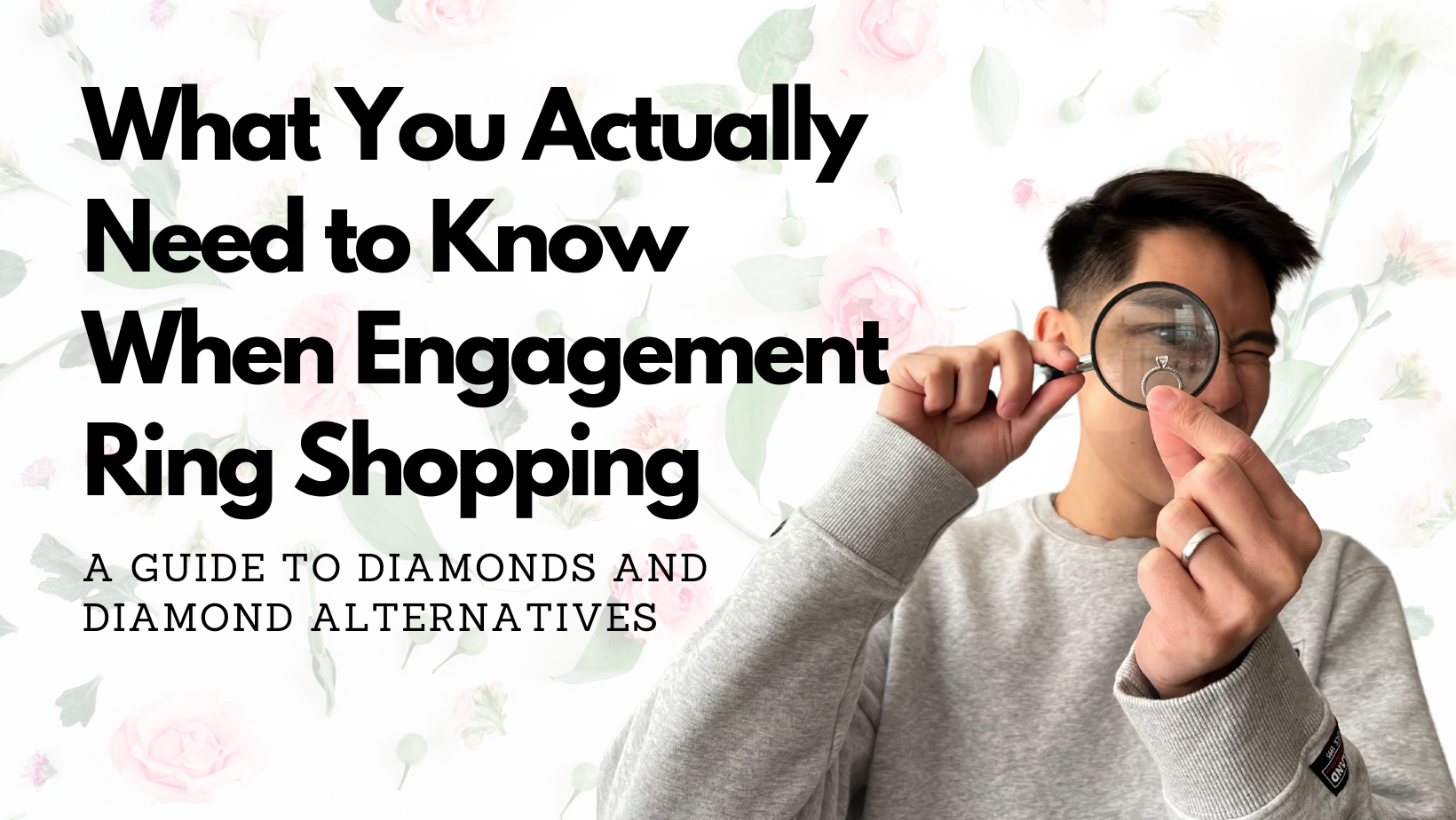
The holiday season is here! And cuffing season will soon be in full effect.
Are you planning on popping the big question? Maybe you're a little nervous, super excited, and stressed all at the same time.
On top of it all, finding the perfect engagement ring is no simple task either. Unless you're Jim..
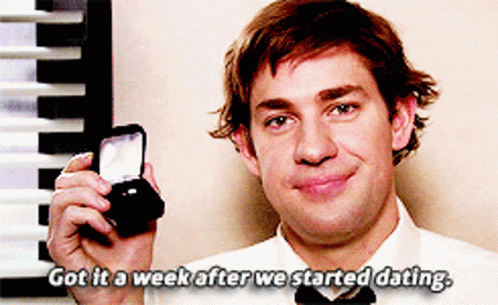
I spent more hours than I'd like to admit researching the diamond industry. Everything from watching documentaries, reading industry reports, to devouring blogs dedicated to helping people find the perfect engagement ring.
My goal here is to help you cut through some of the noise, share lessons learned, and hopefully help you get a little closer to the big moment.
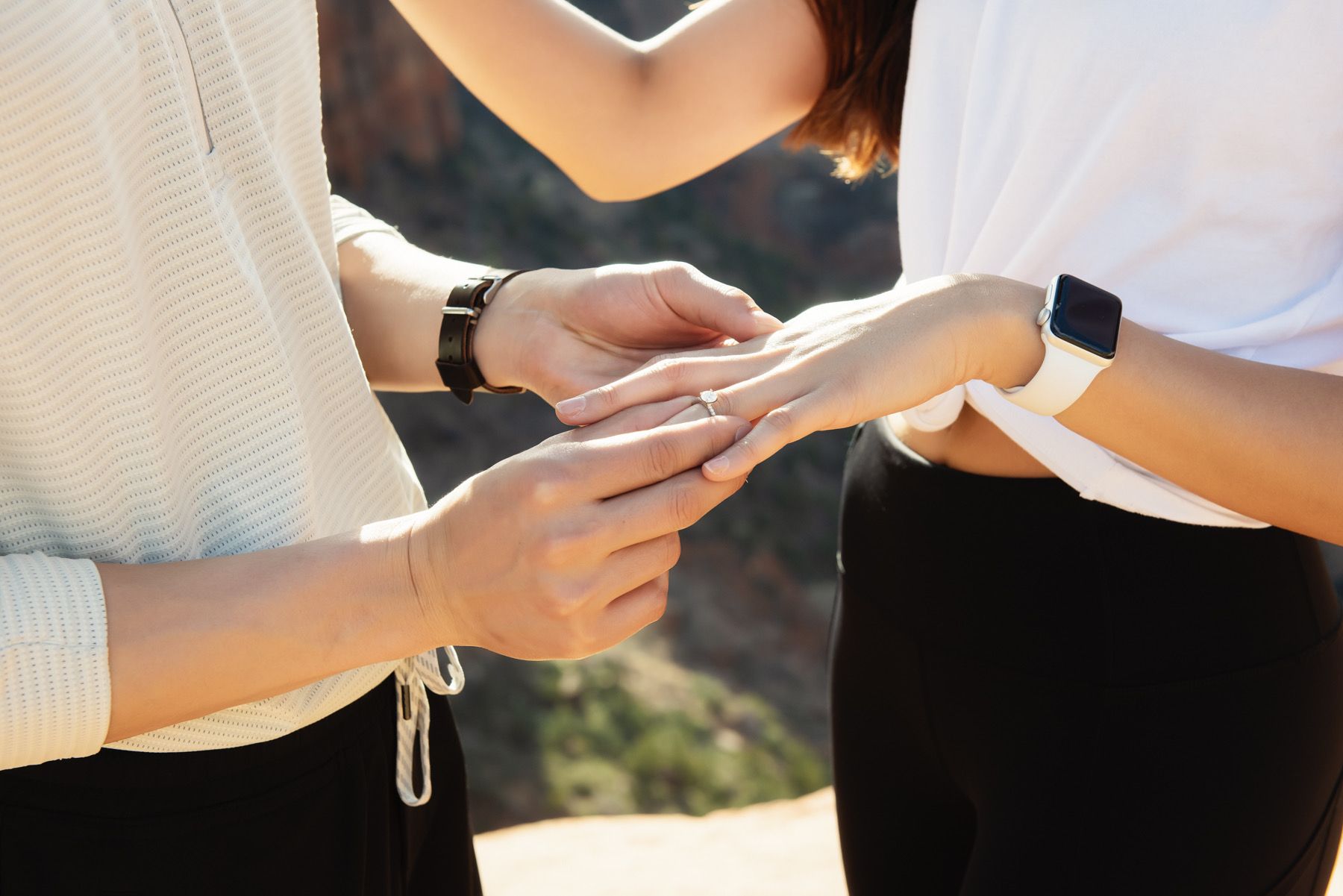
Quick Overview of the Diamond Industry
Vox provides the best overview of the diamond industry on Nextflix in Season 2 Ep. 1 of "Explained: Diamonds". The episode covers where diamonds got their meaning, how diamonds are created, how De Beers created the diamond standard, and the issue of blood diamonds.
De Beers demonstrated a masterclass in marketing to create the diamond engagement ring standard. At one point De Beers had an estimated 80%-90% market share of the diamond industry and had to agree to a $295 million settlement for conspiring to monopolize the sale of rough diamonds.
De Beer's market dominance has slowly declined over the decades allowing the market to dictate diamond prices more efficiently.
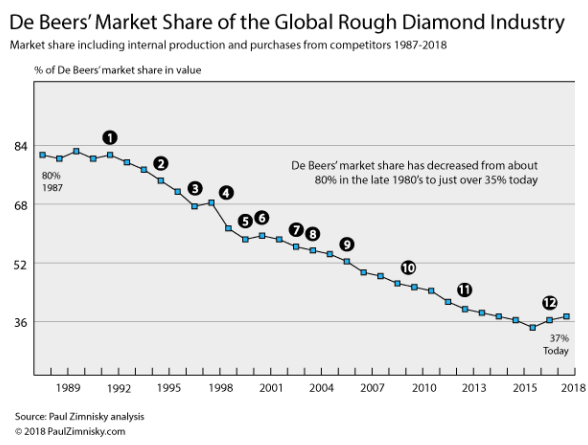
Other diamond alternatives have become more trendy such as Moissanite and Lab Grown Diamonds, which are a fraction of the cost of natural diamonds.
There are many gems that can be used for engagement rings. However, I'm focusing on three of them in particular: Moissanite, Lab Made Diamonds, and Natural Diamonds, which I most heavily weighed and researched.
But before you keep reading, an important message.
Talk to Your Significant Other!
First, let's not jump the gun and propose before you're both ready.
I know the feeling of wanting to have everything be a complete surprise, but it's critical to understand if your partner is ready for the next step of your relationship. Unless they've been dropping hints in a not so subtle way..

Second, 3 months salary is all marketing. How much you spend on an engagement ring is not correlated to how much you love your significant other.
What you choose to serve as a symbol of your love is a very personal decision.
There's not a right answer. For some couples, it may even make sense to have an open conversation about budget and preferences. So don't feel like you have to be making these decisions in a vacuum either.
Okay, now onto the shimmering stones!
Moissanite - A Budget Friendly Alternative to Diamonds
Moissanite gemstones are their own distinct type of man-made gemstones. The average person comparing moissanite and diamond will likely not be able to tell the difference.

Fun fact: Moissanite actually has more sparkle than diamond when compared side by side.

Moissanite's hardness is slightly less than that of diamond (9.25 vs 10 on the Mohs Scale of Hardness). Which is still harder than sapphires, rubies, and emeralds. So it's still ideal for everyday wear and tear.
You can purchase a 1 carat Moissanite stone for around $659 from an online jeweler like DoAmore. That's incredible value for a gemstone that offers many similar qualities to diamond.
Moissanite is a truly budget-friendly option for those who like the look of a larger stone and don't really care if their gemstone is a diamond or not.
Lab Made (Grown) Diamonds - A Chemically Identical, More Affordable Alternative to Diamonds
Lab Made Diamonds have actually been around for a surprisingly long time.
They were first created by General Electric in the 1950's for industrial purposes. Only in the last few decades have we been able to leverage modern methods to produce large gem-quality diamonds.

Lab Made Diamonds have the exact same chemical composition and share the same physical traits as Natural Diamonds. Meaning, you literally can't tell a difference between the two.
No one has to know it's lab-made unless you want them to know either. You could even say it's a "carbon-copy". Hehe.

Although Lab Made Diamonds are more expensive than Moissanite stones, they are still typically 30-50% less expensive than a Natural Diamond.
You can buy a 1 carat Lab Made Diamond for around $1,500-$4,000 depending on the graded quality.
As the manufacturing of Lab Made Diamonds becomes more efficient, that will likely create more supply which could impact the potential resale value of Lab Made Diamonds.
Though, resale value might be moot point since you'd likely keep the engagement ring for a long time anyways, and even natural diamonds only resell for a fraction of their initial cost.
Natural Diamonds - A Mother Earth Compressed Gemstone
It is pretty incredible that most natural diamonds were formed hundreds of millions of years ago. For many, the tradition of a natural diamond can be a really important selling point.
There's rightfully a lot of concerns with the ethics of purchasing a natural diamond due to the history of conflict sourcing. Although in the early 2000's, the Kimberly Process was implemented and has helped to reduce the flow of conflict diamonds.
If you're really concerned about this, you may consider Canada Marked Diamonds which track a diamond all the way from mine to finger.
Natural Diamonds are the most expensive option out of the three types of gemstones outlined. A 1 carat Natural Diamond can go anywhere from $3,500 to well above $20,000 depending on the rated quality.
If you're keen on getting the most bang for buck for your natural diamond, then keep on reading!
The 4 C's
Since there's already a lot of content on the 4 C's, I'll just briefly highlight them in order of importance and share my opinion on each.
The 4 C's are more important for Lab Made Diamonds and Natural Diamonds as Moissanite gems don't typically offer this detailed level of grading.
Cut - Don't skimp on this. Cut is king, since it drives the brilliance of the gem. Go for an excellent cut every time.
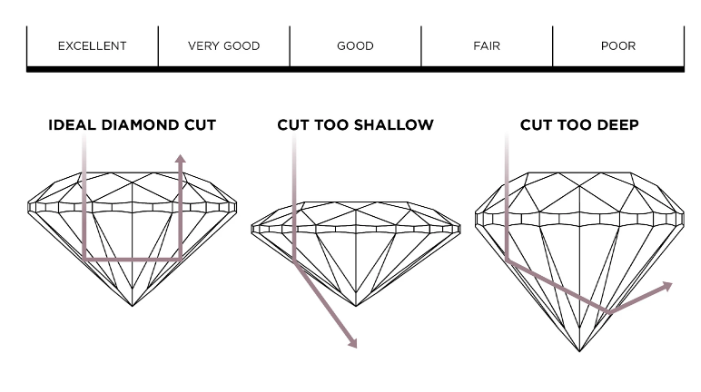
Color - D, E, and F are considered "colorless." G and H still look colorless and are great value options.

Clarity - Clarity measures the inclusions or the flaws in the diamond. You're looking for "eye-clean" here. VS2 or SI1 offer a lot of bang for buck and are typically eye clean.

Carat - Carat is a measure of weight. Diamonds can weigh the same but have totally different measurements. So be mindful of the diamond's measurements. It's nearly indistinguishable to visually notice a difference between 5-10% in carat weight.
Price Shopping
Now that you know what kind of gemstone you'd like to buy, you've got to figure out where to buy it from.
Rare Carat was a life saver for me because it provided aggregated price transparency.
Did you know that multiple jewelers are likely listing the exact same diamond with the same GIA number at different prices?!
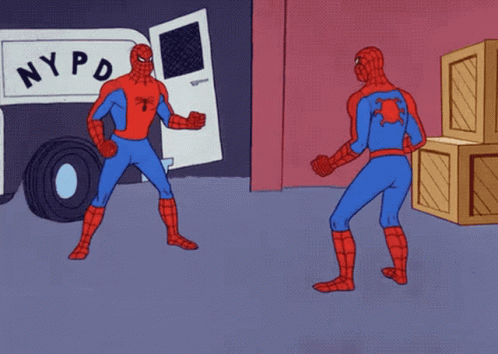
Seeing the same stone, listed in different places, at different prices was wild to me. Rare Carat has a really intuitive search interface and extremely helpful chat support.
When I was at physical stores looking at diamonds, I'd pull up Rare Carat's Diamond Report and punch in the GIA number to check on a diamond's quality and price.
In store prices tend to be a bit higher than purchasing from an online jeweler, likely due to the overhead of maintaining a physical presence.
I know there might be some hesitancy with purchasing a diamond online without seeing it in person. But jewelry stores usually have those LED lights hanging from the ceiling that make everything you pick up look like a firework.
I preferred looking at GIA reports and ASET Images online for a more objective approach and assessment of diamond quality.
If you find the same diamond for different prices at multiple jewelers, you can ask for a price match as well.
They'll almost certainly do so if you share with them another jeweler's price. This will allow you to purchase from the jeweler of your choice at the most favorable price.
Ring Setting
Oh man..there's so many different types of metals out there and an incredible amount of shapes and textures for something as simple as a ring.
The first decision you need to make is on the metal type.
Then you've got pick a design.
I believe it's really important to have your significant other go try on different ring styles and types. What they think they want and like in pictures might not look as good on their finger.
Maybe you can make this a fun date or have them go try some on with a family member or best friend.
But you likely don't want to just take a guess at this or decide solely on photos unless you're pretty confident.
Regardless of what type of setting you choose, I think it's simplest to purchase both the setting and gemstone from the same jeweler.
Pro Tips
- Get your SO's ring size early - They have apps that let you measure ring size on your phone if you can find a ring finger ring from your significant other.
- Try to find ASET Images for Diamonds - These images provide quantifiable results on diamond light performance. You want to see lots of red, symmetrical blues, and minimal areas of green, black and white.
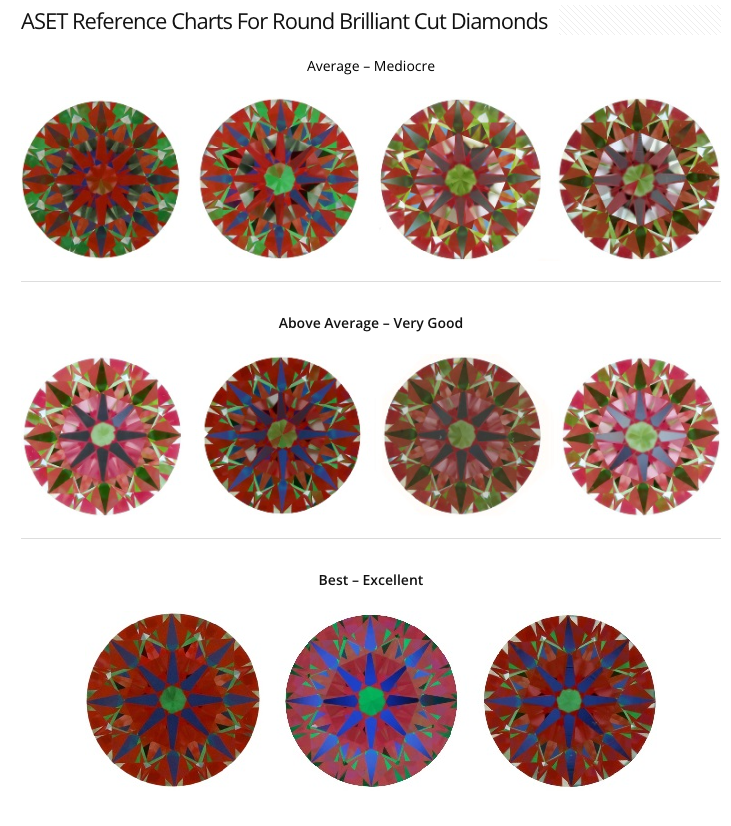
- Consider Getting Your Ring Insured - You can get your ring insured against loss and theft for around 1-2% of its appraised value if you're afraid of losing it.
- Check Etsy for Wedding Bands - I got my titanium comfort fit wedding band for $18 on Etsy :) If your significant other wants to stack their engagement ring with their wedding band, you'll want to make sure that they're the same type of metal. The difference between the hardness of the metals can potentially chip or dent stacked rings.
- Consider Signing Up for a New Credit Card - This will likely be a larger expense than normal. Signing up for a new card and putting the engagement ring on it could help you easily achieve the sign up bonus for the new card. Plus, you might as well get some points back for this purchase. See my post on credit cards for help with this.
- Finally, get a photographer! Engagements are a really fun and special time. I'd highly recommend hiring a photographer to capture the big moment for you. Those photos will be worth every penny. Best of luck!

